
Tillandsia juncea is a species of flowering plant in the genus Tillandsia. This species is native to northern South America, Central America, Mexico and the West Indies.

Tillandsia polystachia is a species of flowering plant in the genus Tillandsia. This species is native to Central America, the West Indies, Bolivia, Colombia, Brazil, Ecuador, Mexico and Venezuela.
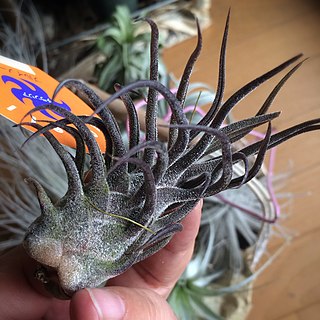
Tillandsia pruinosa, is a species of flowering plant in the family Bromeliaceae. It is commonly known as the fuzzywuzzy airplant. This species is native to northern South America, Central America, southern Mexico, the West Indies and Florida.

Tillandsia butzii is a species of flowering plant in the genus Tillandsia. This species is native to Costa Rica and Mexico.

Tillandsia fasciculata, commonly known as the giant airplant, giant wild pine, or cardinal airplant, is a species of bromeliad that is native to Central America, Mexico, the West Indies, northern South America, and the southeastern United States. Within the United States, this airplant is at risk of extirpation from the Mexican bromeliad weevil, Metamasius callizona. A related plant, Tillandsia utriculata, sometimes called the "wild pine", is endemic to the same areas.
Tillandsia festucoides, commonly known as the fescue airplant, is a species of bromeliad that is native to the Greater Antilles, Mexico, the Cayman Islands, and Central America.

Tillandsia filifolia is a species of flowering plant in the genus Tillandsia. This species is native to Costa Rica and Mexico.

Tillandsia flabellata is a species of flowering plant in the family Bromeliaceae. This species is native to southern Mexico and Central America.
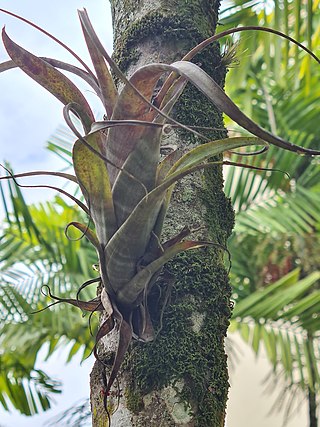
Tillandsia flexuosa, the twisted airplant, is a species of bromeliad in the genus Tillandsia. This species is native to Central America, southeastern Mexico, northern South America and the United States (Florida).

Tillandsia ionantha, the air plant, is a species of plant in the genus Tillandsia. This species is native to Central America and Mexico. It is also reportedly naturalized in Broward County, Florida.
Tillandsia lampropoda is a species of flowering plant in the genus Tillandsia. This species is native to Central America and southern Mexico, from Oaxaca to Panama.
Tillandsia makoyana is a species of flowering plant in the Bromeliaceae family. This species is native to Costa Rica and Mexico.
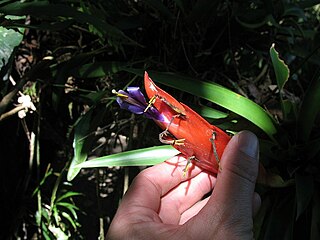
Tillandsia multicaulis is a species of flowering plant in the genus Tillandsia. This species is native to Central America and Mexico.

Tillandsia punctulata is a species of flowering plant in the genus Tillandsia. This species is native to Central America and Mexico.

Tillandsia schiedeana is a species of flowering plant in the genus Tillandsia. It was named for the collector Christian Julius Wilhelm Schiede. As an epiphyte it is found "growing in open tropical forests, and saxicolous, growing on cacti and burseras on steep dry slopes in semiarid regions in Mexico, Central America, West Indies, Venezuela, and Colombia at elevations of 750 to 5,500 feet."
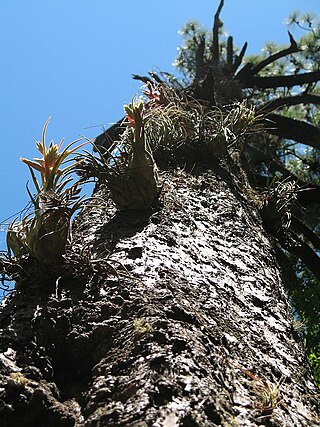
Tillandsia seleriana is a species of flowering plant in the genus Tillandsia. This species is native to southern Mexico and Central America.

Tillandsia streptophylla is a species of flowering plant in the genus Tillandsia. This species is native to Central America, Mexico, and the West Indies.
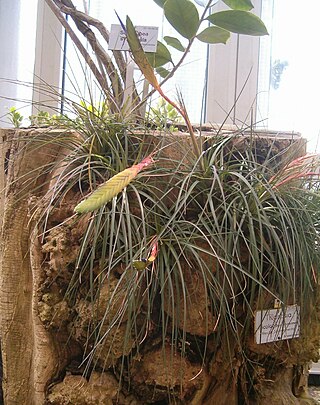
Tillandsia tricolor is a species of flowering plant in the genus Tillandsia. This species is native to Central America and Mexico.

Tillandsia utriculata, commonly known as the spreading airplant, the giant airplant, or wild pine is a species of bromeliad that is native to Florida and Georgia in the United States, the Caribbean, southern and eastern Mexico, Central America, and Venezuela.
Tillandsia longifolia is a species of flowering plant in the genus Tillandsia. This species is native to Bolivia, Colombia, Peru, Panama, Costa Rica and Venezuela.
















